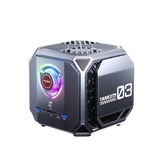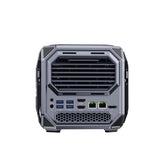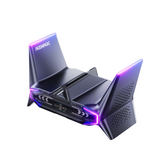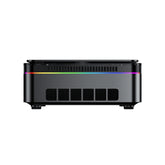USB Interfaces Explained: Understand Standards, Speeds, and Types
A Thorough Analysis of USB Standards and Interface Types
USB (Universal Serial Bus) is one of the most commonly used connection standards for modern electronic devices. However, its complex naming rules, various interface types, and evolving speed classifications can be overwhelming. In this comprehensive guide, we will explain everything you need to know about USB technology, including its development history, connector types, data transfer speeds, and common user misconceptions—so you can choose the right USB device with confidence.
Evolution of USB: From USB 1.0 to USB4
Since its introduction in 1996, USB technology has undergone significant advancements. Each generation has brought faster speeds and new capabilities:
|
USB Version |
Release Year |
Maximum Speed |
Alias / Notes |
|
USB 1.0 |
1996 |
1.5 Mbps (Low Speed) |
Obsolete |
|
USB 1.1 |
1998 |
12 Mbps (Full Speed) |
Used in early peripherals |
|
USB 2.0 |
2000 |
480 Mbps (High Speed) |
Still widely used for basic devices |
|
USB 3.0 |
2008 |
5 Gbps |
Now called USB 3.2 Gen 1 |
|
USB 3.1 |
2013 |
10 Gbps |
Now called USB 3.2 Gen 2 |
|
USB 3.2 |
2017 |
20 Gbps |
Requires USB Type-C |
|
USB4 |
2019 |
40 Gbps |
Based on Thunderbolt 3, supports multiple protocols |
Why USB Naming is So Confusing
The USB Implementers Forum (USB-IF) has revised USB naming conventions multiple times, which has led to confusion among users. Here’s how the naming has changed:
- USB 3.0 → USB 3.2 Gen 1 (5 Gbps)
- USB 3.1 → USB 3.2 Gen 2 (10 Gbps)
- USB 3.2 Gen 2×2 → 20 Gbps (Type-C only)
Tip for Buyers: Always look beyond the label. Check the actual speed rating (5 Gbps, 10 Gbps, or 20 Gbps) to make sure the USB port or cable meets your performance needs.
USB Connector Types Explained: Type-A, Type-B, and Type-C
Understanding the differences between USB connector types is essential when choosing a device or accessory.
USB Type-A (Standard Connector)
- Most common connectors are found on computers, flash drives, and peripherals.
- Color indicators:
- Black : USB 2.0
- Blue : USB 3.0 / USB 3.2 Gen 1
- Red / Green : USB 3.2 Gen 2 (not standardized)
USB Type-B (Device Connector)
- Often used in printers, scanners, and external drives.
- Includes Micro-B (used in older Android phones), which is now being replaced by Type-C.
USB Type-C (The Future Standard)
- Reversible plug design for ease of use.
- Supports high-speed data transfer, USB Power Delivery (PD), and video output.
- Compatible with USB 3.2 Gen 2×2 and USB4 for speeds up to 40 Gbps.
- Also supports Thunderbolt 3 and Thunderbolt 4 , making it ideal for future-proof devices.
USB Speed Comparison: USB 3.2 Gen 1 vs Gen 2 vs Gen 2×2 vs USB4
Due to changes in naming, distinguishing USB speeds can be tricky. Here's a simplified breakdown:
|
USB Version |
Former Name |
Max Speed |
Connector Type |
Label |
|
USB 3.2 Gen 1 |
USB 3.0 |
5 Gbps |
Type-A (Blue) |
SS |
|
USB 3.2 Gen 2 |
USB 3.1 |
10 Gbps |
Type-A (Red/Green) |
SS 10 |
|
USB 3.2 Gen 2×2 |
|
20 Gbps |
Type-C Only |
SS 20 |
|
USB4 |
|
40 Gbps |
Type-C Only |
USB4 |
Buying Recommendations
- For fast file transfers , choose USB 3.2 Gen 2 or USB4.
- For basic accessories like keyboards, mice, or USB flash drives, USB 3.2 Gen 1 is more than sufficient.
Common USB Misconceptions—Debunked
Is USB Type-C always faster than USB Type-A?
No. USB Type-C only refers to the connector's shape. The speed depends on the USB generation it supports (e.g., 2.0, 3.2, or USB4).
What’s the difference between USB4 and Thunderbolt 4?
- USB4 is based on Thunderbolt 3 and optionally supports up to 40 Gbps.
- Thunderbolt 4 guarantees 40 Gbps speed and includes stricter requirements for compatibility and power delivery.
How can I check my USB port’s speed?
- On Windows: Open Device Manager → Universal Serial Bus Controllers → Look for keywords like "USB 3.0," "USB 3.1," or "USB 3.2."
- On macOS: Apple Menu → About This Mac → System Report → USB → View speed details.
Summary: Key Takeaways for USB Buyers
USB Connector Types
- Type-A: Legacy devices and peripherals
- Type-B: Printers and older hardware
- Type-C: Fast, compact, and future-ready
USB Speed Categories
- USB 3.2 Gen 1 – 5 Gbps
- USB 3.2 Gen 2 – 10 Gbps
- USB 3.2 Gen 2×2 – 20 Gbps (Type-C only)
- USB4 – 40 Gbps (Type-C only)
Shopping Tips
- Always verify the actual data transfer speed , not just the version label.
- Prioritize USB4 + Type-C ports when buying new devices for speed and longevity.
Need a Mini PC with Full USB Compatibility?
At ACEMAGIC , we specialize in high-performance Mini PCs that feature a full range of USB ports—including USB Type-C , USB4 , and multiple USB-A interfaces —designed to meet your needs for speed, flexibility, and connectivity.
Whether you're transferring large files, running multiple displays, or connecting essential peripherals, our Mini PCs deliver powerful USB performance.
Explore ACEMAGIC Mini PCs to find your ideal compact computing solution today!








Leave a comment
Please note, comments need to be approved before they are published.